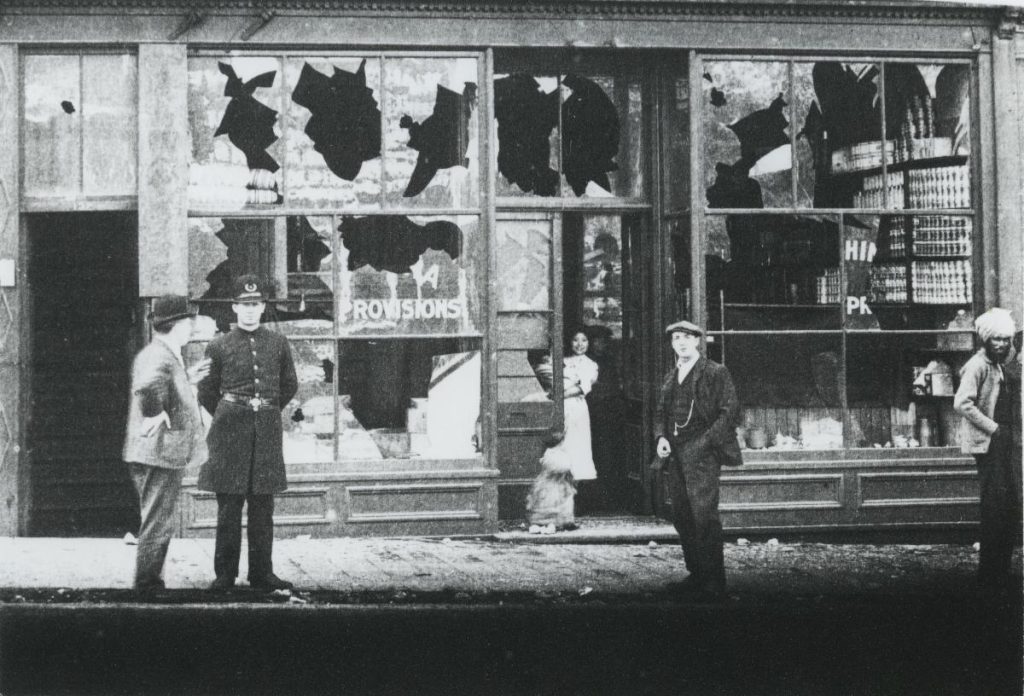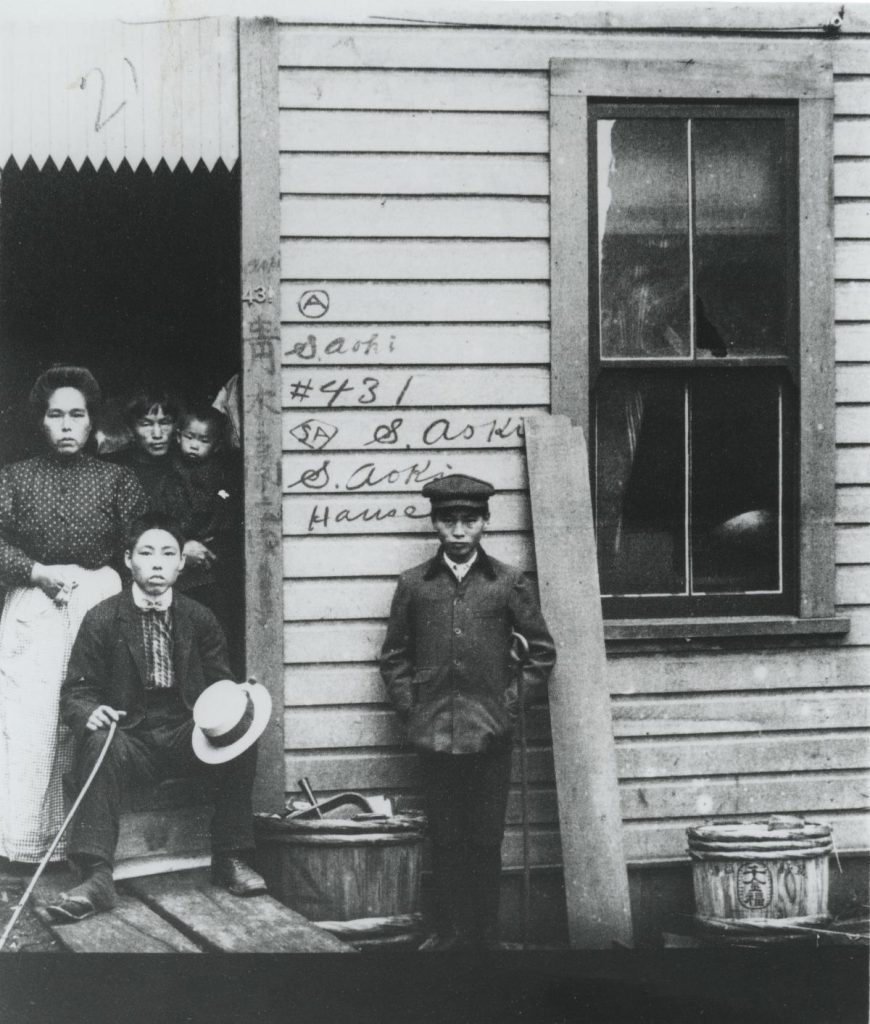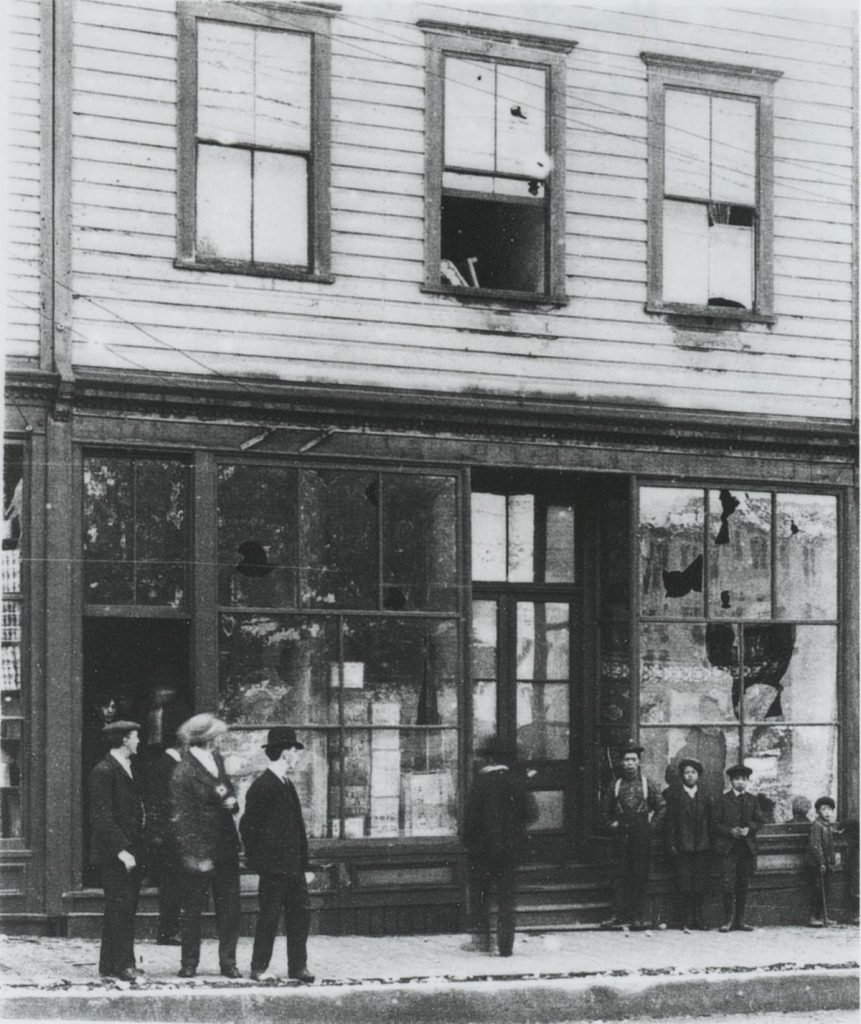Labour Day, 2022 is the 115th anniversary of the 1907 Vancouver Riot. For many years, our media and our immigration industry have used the riot to tell Canadians how terrible the Vancouver population’s attacks were on Chinatown and Japantown.
If anyone were to ask those who are saying these things where they were getting their information, 99% would have to admit they were merely parroting what they had been told by Canada’s low-life immigration industry, disgraceful media and arrogant ethnic groups. So let’s look at what really happened.
Let’s start by asking one important question: Was there a connection between the unexpected arrival of about 11,500 Japanese, East Indians and Chinese in 1907 and the 1907 Vancouver Labour Day riot?
There is clear evidence that there was. Before the riot, British Columbia had undoubtedly complained to Ottawa about the numbers of new arrivals in 1907.
Sensitive to riots against Whites in China not long before and for which Whites had been compensated by China, Ottawa listened.
Not long after the Vancouver riot, Ottawa sent its Deputy Minister of Labour, Mackenzie King, to Vancouver in order to conduct a Royal Commission which would determine how much compensation should be paid to (1) the Japanese and (2) the Chinese whose property had been damaged.
While King was doing his work, Ottawa asked him to conduct another Royal Commission which would investigate why 11,500 Japanese, Chinese and East Indians had arrived in the first ten months of 1907.
The population of Vancouver was about 60,000 at the time and an inflow of 11,500 would have been very noticeable. For legitimate reasons, the the Chinese in parts of colonized China did not want cultural and economic invasion. For similar reasons, the people of Vancouver felt the same way.
Mackenzie King expressed Canada’s concern in in these words : “the influx of 8125 Japanese alone had “naturally caused great alarm and, if anything more were needed to occasion unrest, it was found in the simultaneous arrival from the Orient of Hindus by the hundreds and Chinese in larger numbers than in preceding years”.
In other words, the concern of Canada and its workers, was legitimate. According to Dr. James Morton’s book “In The Sea Of Sterile Mountains”, about 30,000 of Vancouver’s 60,000 people participated in the parade through Vancouver streets that preceded the riot (P. 205)–an indication in 1907 of significant Vancouver support for an end to cheap labour.
Obviously, many people at the time believed that the measures that Ottawa had taken up to 1907 were not having the desired effect of stopping the importation of cheap labour and the unfair employment competition it caused in the labour market. Chinese labour contractors were the key factor in the importing of Chinese labourers up to 1907. Almost all the Chinese labourers who traveled from China to Canada could never have afforded to pay transportation costs to come to Canada, so the Chinese contractors paid their traveling costs in much the same way that Chinese snakeheads pay the fares of Chinese illegals today.
Although Canada and Japan negotiated “Gentleman’s Agreements” with the help of the Japanese Consul in Vancouver to restrict Japanese labourer inflows, China was in such political chaos that it was difficult for Canada to negotiate similar agreements with the Chinese government. That was the major reason why Canada took unilateral action (particularly Head Taxes) against Chinese labour-contractors. This was also done simply because the Chinese represented the majority of the cheap labour.
Among the measures to restrict Chinese labourer inflow was the Chinese Labourer Head Tax. Note that the term “Chinese Head Tax” is incorrect. The term should be “Chinese Labourer Head Tax”. Chinese businessmen and their families, Chinese students and Chinese consuls were exempt from the Head Taxes. The first significant tax was $50 in 1886. Next was the $100 tax in 1901 and the $500 tax in 1904. Prior to 1904, Chinese business contractors had imported most of the Chinese labourers from China, but individual Chinese also became involved from 1904 on. When the $500 Head Tax was imposed, Chinese contractors began to find that there was no longer much profit in importing Chinese labourers and obtaining work for them. The result was that in the 3-year period immediately following the imposition of the $500 Head Tax, very few Chinese labourers came to Canada.
With the drop in Chinese labourers, a Japanese immigration company, the Canadian Nippon Supply Company, saw a business opportunity. The problem was that its opportunity would undermine the measures that Ottawa had put into place to deter cheap Japanese labour. Without telling Ottawa, this company secretly and deviously arranged with the CPR to import between 500 and 2000 Japanese labourers to work in the CPR’s western Division which at that time employed around 5000 workers.
The newcomers would represent a significant part of the entire western CPR work force. All the Japanese would be paid less than Canadian workers and would probably be displacing higher-paid workers.
The Nippon Supply Company also secretly arranged to import about 500 Japanese labourers to work in the Dunsmuir family’s coal mines on Vancouver Island. These Japanese miner labourers would also be paid less than their Canadian counterparts.
Rumours about these deals had circulated in 1907, but were confirmed only during Mackenzie King’s Royal Commission investigation after the riot. There is no question that the rumours were a major reason for the high turn-out in the parade. There is no question that B.C. worker frustration with this issue which had built up over many years was also a factor.
In response to the frustration which had started in the late 1800’s, the British Columbia legislature had passed a large number of laws to curb Asian cheap labour, but almost all were disallowed by Ottawa. Because almost all of the Asians in Canada at that time were located in B.C. , MP’s and officials in other parts of Canada, who were isolated from the issue, found it hard to understand what British Columbians were complaining about. In Mackenzie King’s role as Deputy Minister of Labour, King stated clearly that although there were other minor reasons for conflict, the major factor in the conflict between locals and Asians was the economic advantage Asians had in the labour market.
Labourers’ wages in Canada were considerably higher than those in Japan, China or India. For example, at cheap-labour wages in Canada, which contractors had set precedents for in the 1880’s and which cheap-labour-employees readily agreed to, Japanese labourers received 10 times the wage they were paid in their home country; Chinese labourers, 20 times; East Indians, around 50 times.
Most Asians came to Canada as “sojourner” males, in contrast to the many married local labourers. In the 1901 Royal Commission Report, many B.C. residents testified that they had been displaced from work and knew of many other locals who had been forced to leave. Others complained that many potential married settlers had been discouraged from coming to B.C. because of low-wage labourers. A so-called “better life”, the cliched phrase used today by our immigration industry to sanctify and justify high immigration levels, really meant a “worse life” for Canadians displaced from their jobs in that era.
There were several important results of King’s inquiry. One was that his investigation confirmed what the very extensive Royal Commission Report of 1901 had uncovered :
(1) That a 1901 Royal Commission had heard much talk of Chinese labourers being brought here by Chinese labour contractors. However, there was little evidence about how the Chinese labourer contractors operated. The evidence King gathered on the Canadian Nippon Supply Company provided a picture of how the Japanese contractors worked and probably also a fairly good picture of the methods of the Chinese who had worked in the shadows for over 2 decades. It also showed that the contractors were involved in a very profitable business. In fact, some of the richest Chinese businessmen in Chinatown were involved in labour contracting.
(2) King’s inquiry also demonstrated the chaos in Canada’s immigration system in 1907 and how labour disputes in far-off Hawaii could affect Canada. At that time, there were between 50,000 and 60,000 Japanese agricultural workers in Hawaii. Facing a cut in wages in Hawaii, thousands of Japanese labourers were encouraged by shipping companies and others to leave Hawaii for supposedly greener pastures in Canada and the U.S.
(3) Mackenzie King concluded that if thousands more were to do the same thing, the potential for extremely serious conflict with the resident population in Canada was great. This was because there was clearly not enough employment for those who had arrived, nor was there sufficient accommodation. King pointed out that even those who had been indifferent to Asian immigration were “alarmed” at the problems the sudden high inflows had caused.
One of the major results of King’s investigation was that Ottawa enacted “continuous passage” legislation, which required all Japanese who wanted to come to Canada to come directly from Japan. Today, Canada’s immigration industry likes to say that “Canada’s continuous passage law” discriminated against Japanese. However, the facts show that the passage of a”Continuous Passage” law was sensible and legitimate.
Even before this law was approved, even Japanese law declared that it was illegal for Japanese workers (who had been permitted to travel to Hawaii), to travel on their own. In other words, Japan insisted on restricting the travel of Japanese. One reason became clear as a result of the 1907 Vancouver riot : Japan did not want to be embarrassed internationally by having its citizens disobey laws in other countries.
Mackenzie King estimated that number of Japanese in the total of 11,000+ who arrived in 1907 to be 6398. The remaining 1650 Japanese had traveled from Japan. Of the 1650, 900 were being imported by the Canadian Nippon Supply Company (a Japanese labour contractor) and another 750 were returning to Canada or coming as immigrants approved by the Japanese consul.
Of the total of 8125 Japanese who arrived in 1907, about 3500 would soon leave for the U.S. while about 4500 remained in Canada.
The illegal emigration from Hawaii, the scheming of the Canadian Nippon Supply Company, and the 1907 riot which resulted from the scheming, were major international embarrassments to both Canada and Japan. To compensate for the corrupt and under-handed actions of its citizens, Japan quickly agreed to Canada’s continuous passage law which required that people coming from Asia (particularly Japan) had to come directly from their country of origin, not from some place like Hawaii along the way.
The Japanese government quickly conceded that this law was intended to protect Canadian labourers and that there was ample justification for the law.
That law would later be applied to the East Indians aboard the Komagata Maru who tried to challenge the law in 1914 but lost. That loss has been met with shrill, unjustified Punjabi Sikh claims which failed to look at all the immigration conflict which preceded the Komagata Maru incident.
The most significant and damning thing that can be said about the current interpretations of the 1907 Vancouver Parade and Riot is that they are wrong. In spite of this, those interpretations ey have long been used to elicit guilt from Canadians and subsequently to perpetuate unjustified high immigration levels today.
One positive thing that can be said about the federal government of 1907 is that it did try to correct its mistakes. Unfortunately, the same thing cannot be said today. Many elected officials at all three levels of government are doing almost nothing to correct the major blunders in Canada’s immigration policies of the past 3 decades.
So we have two questions:
(1) Who are the “enlightened” in the debate over the 1907 immigration chaos and the Vancouver Riot issue? : (A) the sensible people of 1907 who courageously defended themselves or (B) the political and media parrots, cowards and deadbeats of today?
(2) Will it take events similar to those of 1907 to get a number of current elected officials to pay attention to the complaints of many Canadians that Canada’s current high immigration intake has caused such severe problems as unaffordable housing?
For photos of the damage done to Chinese and Japanese buildings during the riot, see these photos from the UBC Library :
Vancouver Riot Photos









